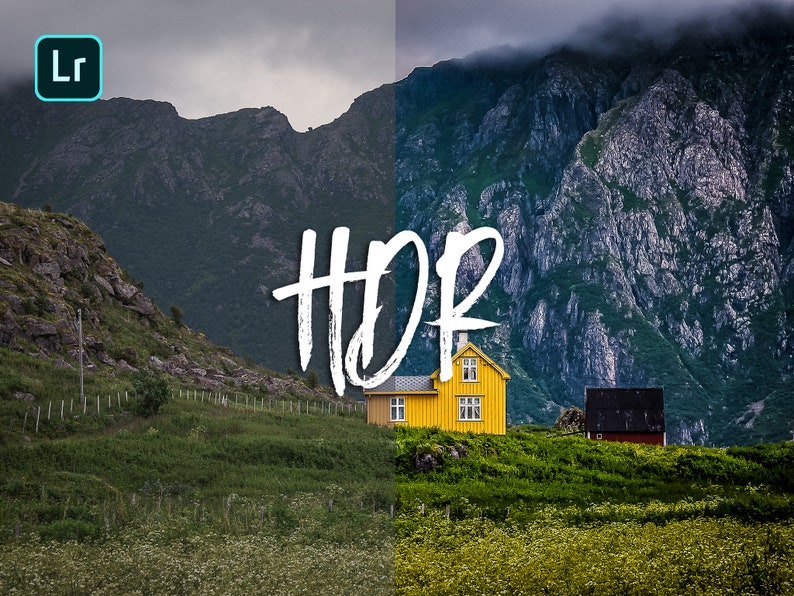
- #Lightroom vs hdr express how to#
- #Lightroom vs hdr express software#
- #Lightroom vs hdr express series#
- #Lightroom vs hdr express download#
This acts as a marker when you review your images on the computer. Get into the habit of taking a picture of your hand in between series.
#Lightroom vs hdr express series#
At this point, recognition of the individual series becomes important. If the light gets better, you may even shoot another five. You may shoot a series of five images and then change your composition and shoot five more. Shooting for HDR generates a lot of images that look similar. Lightroom’s Photo Merge > HDR function creates a RAW file, so it is irrelevant whether you apply this setting before or after merging. Photomatix recognizes these edits, and that’s one of the primary reasons I use this software. Because these edits are important to any image, I apply them across all scenic shots regardless of whether they will be processed in HDR. Not all HDR programs recognize changes made to a RAW file in Lightroom. But we’re interested in input sharpening at this stage. This is where output sharpening comes in.

Upsizing an image to a 16x20 print, however, will result in a loss of sharpness. Downsizing an image to, say, a JPEG for email, a Web page, or a 5x7 print rarely requires output sharpening. Output sharpening is applied to images that have lost softness due to enlargement. Input sharpening, then, corrects the photo’s initial inherent lack of sharpness.

No lens creates perfectly sharp images, and all photos are a little soft the moment they are made. Input sharpening is applied to fix the inherent image softness that accompanies image capture. There are two types of sharpening: input sharpening and output sharpening. Removing chromatic aberration is accomplished in the Lens Corrections panel. Although it may not be noticeable at small magnifications, such as on a website, it becomes glaring when you make larger prints. Negative clarity is great for portraits.Ĭhromatic aberration is the presence of a colored fringe around edges in your photograph. I apply a little extra clarity to almost all of my landscape and architectural images-regardless of whether they will become HDR images. It performs a separate function, but the look is similar. The Clarity slider is similar to sharpening. This means that the moment the images are imported, they have already been edited to your specifications! For the most part, each image will need individual attention, but the following edits can be applied to every image: More importantly, it allows you to import your images with a Develop preset. The Import module allows you to rename images, generate thumbnails for them, and import them into a folder of your choice in any location you desire. There are many ways to accomplish this, but I prefer to use Lightroom’s Import module. Whichever program you use, you will need to get the images from your camera onto your computer.
#Lightroom vs hdr express download#
With these programs you can download images from your camera, organize, edit, export to email, create books and slideshows, and, with Lightroom, even prepare a website. Lightroom and Photoshop are professional-level programs that have a great deal in common. I discuss the pros and cons of Photomatix versus Lightroom in the next chapter. Lightroom 6/Lightroom CC has an HDR feature built right into the program. If you missed this step or are unable to find the plug-in, a trip to the manufacturer’s website will supply you with step-by-step directions for the installation process.
#Lightroom vs hdr express how to#
Look for the directions on how to install the plug-in for your particular computer and program.
#Lightroom vs hdr express software#
HDR software typically comes with the plug-in module. Using these programs as plug-ins is a real time saver and helps keep your photographs organized. Photomatix then blends the images and sends the final image back into Lightroom. When you want to blend a series together using HDR, you would export the series into an HDR program such as Photomatix. For example, you could download, organize, and edit your images using Lightroom. Editing programsĪ plug-in allows an HDR program to work in concert with your base software. Most will also “plug in” to many of the more popular editing programs, such as Photoshop and Lightroom. Learn More Buy Preparing Images in Lightroomįor the most part, HDR programs are standalone programs that operate independently of your primary editing software.

HDR Photography: From Snapshots to Great Shots


 0 kommentar(er)
0 kommentar(er)
